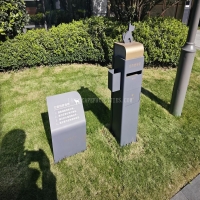Welcome to the website for landscape facilities products and knowledge.
How does the design prevent the accumulation of dust in arid climates?
In arid climates, dust accumulation poses significant challenges for both infrastructure and daily life. Innovative design strategies and advanced materials are employed to mitigate this issue effectively.
1. Wind Deflection Structures: Buildings in arid regions often incorporate angled roofs, curved surfaces, or windbreaks to redirect airflow. These designs minimize dust deposition by altering wind patterns, preventing particles from settling on surfaces.
2. Smooth and Non-Porous Materials: Surfaces made from polished concrete, glazed tiles, or coated metals resist dust adhesion. Their smoothness ensures dust is easily washed away by occasional rain or cleaning, reducing buildup.
3. Elevated and Ventilated Designs: Raising structures on stilts or using elevated platforms allows wind to pass underneath, carrying dust away. Ventilated facades further enhance airflow, reducing stagnant areas where dust might collect.
4. Landscaping as a Barrier: Strategic placement of vegetation, such as drought-resistant shrubs or grasses, acts as a natural dust filter. These plants trap airborne particles while stabilizing the soil to prevent erosion.
5. Automated Cleaning Systems: Some modern designs integrate automated sprinklers or air blowers to periodically remove dust. These systems are particularly useful in high-traffic or industrial areas.
By combining these approaches, architects and engineers create environments that remain cleaner and more habitable, even in the harshest arid conditions. The focus on sustainability and low-maintenance solutions ensures long-term effectiveness against dust accumulation.
Related search:

Recommendation
Outdoor cat and dog feces trash can; Community pet trash can; Metal multi-color design